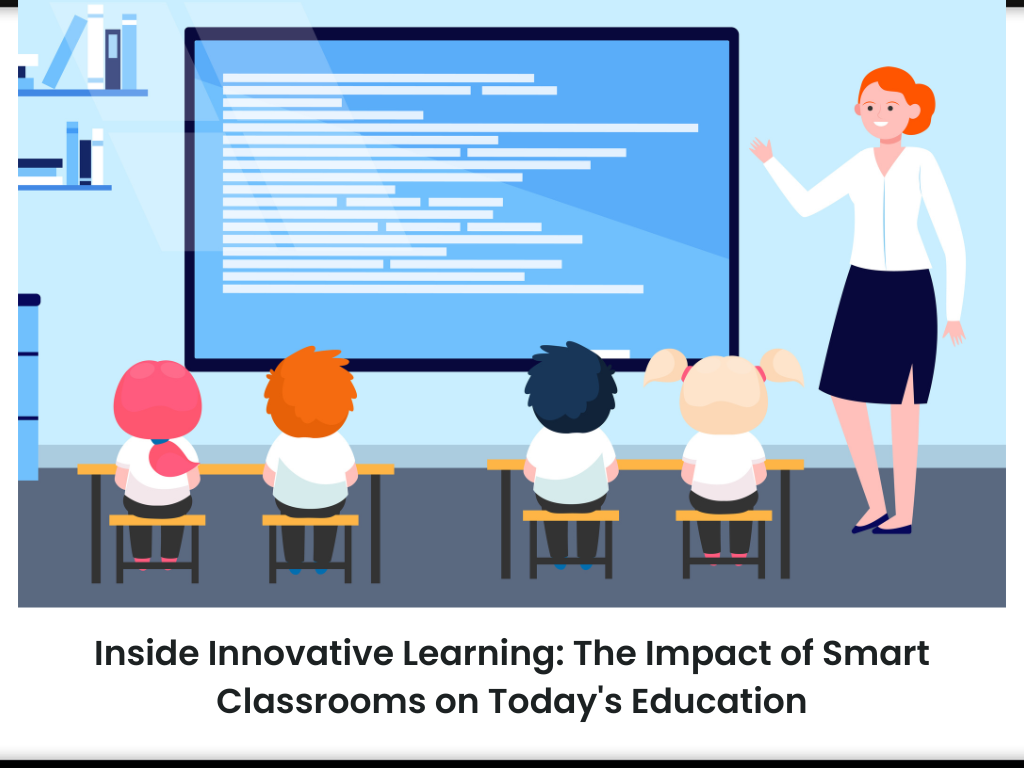In the landscape of modern education, the introduction of smart classrooms has been a game-changer, reshaping the contours of teaching and learning. No longer confined to the passive transfer of knowledge, today’s educational environments are vibrant ecosystems that foster interactive learning and digital literacy. Leading the charge in this transformation is The Star Global School, a preeminent private school in Rohtak, which has seamlessly integrated advanced technology with traditional teaching methods to create a dynamic and engaging experience for students. This article explores the profound impact smart classrooms are having on today’s education, with a spotlight on how The Star Global School is setting a benchmark for innovative learning.
The Advent of the Smart Classroom
Smart classrooms are not merely a collection of high-tech gadgets; they are thoughtfully designed spaces that incorporate technology to facilitate a more effective and personalized learning experience. From interactive whiteboards to AI-powered educational software, these technological enhancements are revolutionizing the way educators teach and students learn.
Interactivity and Engagement
The heart of the smart classroom is interactivity. Traditional classrooms often struggle to keep students engaged, but smart classrooms use tools like digital whiteboards and audience response systems to involve students directly in the learning process. Interactive simulations and games make learning fun and memorable, catering to various learning styles and preferences.
Personalization of Learning
One size does not fit all in education, and smart classrooms acknowledge this through adaptive learning technologies. These systems analyze individual student performance and tailor the educational content to their needs, allowing students to learn at their own pace. This personalization ensures that all students, regardless of their learning abilities, receive the attention and resources they need to succeed.
Access to a World of Information
Smart classrooms provide seamless access to a vast array of online resources. Teachers can incorporate multimedia content like videos, podcasts, and virtual tours to enrich their lessons. This access not only enhances the learning experience but also prepares students for a world where digital literacy is paramount.
Collaborative Learning Environments
Collaboration is a cornerstone of smart classroom design. Technologies such as cloud computing allow students to work together on projects, even from different locations. This collaborative approach not only improves communication and teamwork skills but also reflects the increasingly interconnected nature of the modern workplace.
Immediate Feedback and Assessment
In traditional classrooms, feedback can be slow and infrequent. Smart classrooms, on the other hand, enable real-time feedback through digital assessments. Teachers can quickly gauge understanding, providing immediate support or extension activities where necessary. This instant feedback loop ensures that students are continuously progressing.
Preparing for the Future
Smart classrooms prepare students for the future by integrating the technology they will encounter in higher education and the workforce. By becoming proficient with digital tools and platforms, students gain a competitive edge and are better equipped for the challenges of the digital age.
The Teacher’s Role: Evolving with Technology
The role of the teacher in a smart classroom evolves from a source of knowledge to a facilitator of learning. Teachers guide students through technology-rich environments, encouraging exploration and critical thinking. Professional development is crucial, as educators must stay abreast of the latest technological trends and pedagogical strategies.
Challenges and Considerations
The transition to smart classrooms is not without challenges. The cost of technology and the need for ongoing maintenance can be significant. There is also the risk of widening the digital divide if equal access to these resources is not ensured. Furthermore, over-reliance on technology may lead to neglect of fundamental teaching principles if not carefully balanced.
Smart Classrooms and Special Education
Smart classrooms have a profound impact on special education. Assistive technologies, such as speech-to-text software and interactive learning apps, provide alternative means for students with disabilities to engage with the curriculum. This inclusive approach ensures that all students have the opportunity to reach their full potential.
Global Connectivity
Smart classrooms break down geographical barriers, connecting students with their peers around the world. Through global collaboration projects and virtual exchanges, students develop a deeper understanding of different cultures and perspectives, fostering global citizenship.
Sustainability and Smart Classrooms
Sustainability can also be integrated into the smart classroom. Digital resources reduce the need for paper, and smart energy systems can minimize the environmental footprint of schools. Educators can leverage technology to teach about sustainability issues, using the classroom itself as a teaching tool.
The Quantifiable Benefits
Research into the effectiveness of smart classrooms indicates a positive trend. Studies show improvements in student engagement, attendance, and academic performance. Furthermore, teachers report higher job satisfaction when they have access to advanced tools that facilitate creative teaching methods.
Conclusion
The impact of smart classrooms on today’s education is far-reaching and profound. They provide an enriched learning environment that prepares students for the complexities of the modern world. By harnessing the power of technology, smart classrooms enhance interactivity, personalization, and collaboration, creating an educational experience that is not only more engaging but also more effective. The Star Global School stands as a testament to this advancement, embodying the very essence of innovative learning spaces. As we embrace the smart classrooms at The Star Global School and others like it, we pave the way for a brighter, more informed, and interconnected generation of learners. The smart classroom is not just a trend; it is the future of education, unfolding before our eyes.


